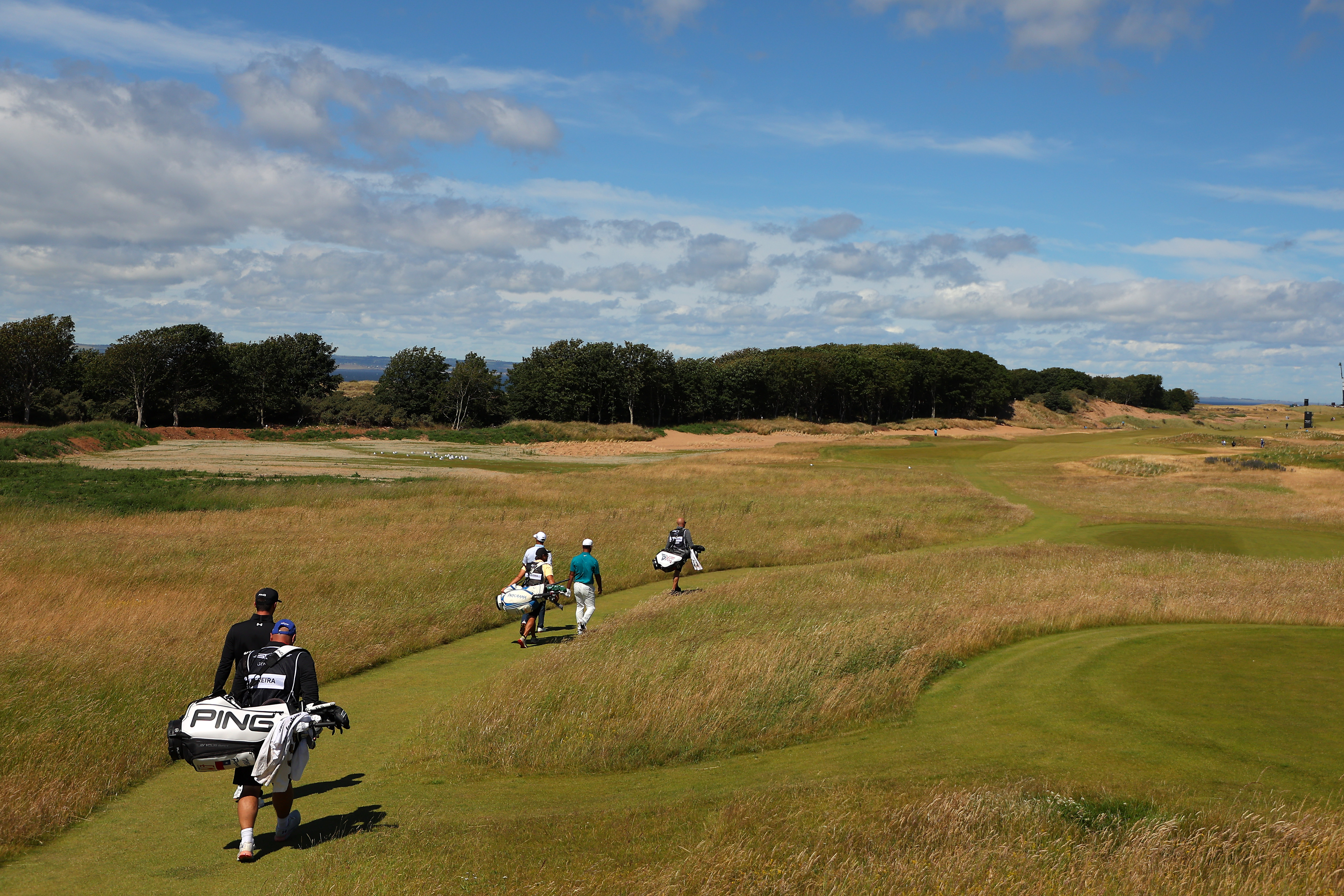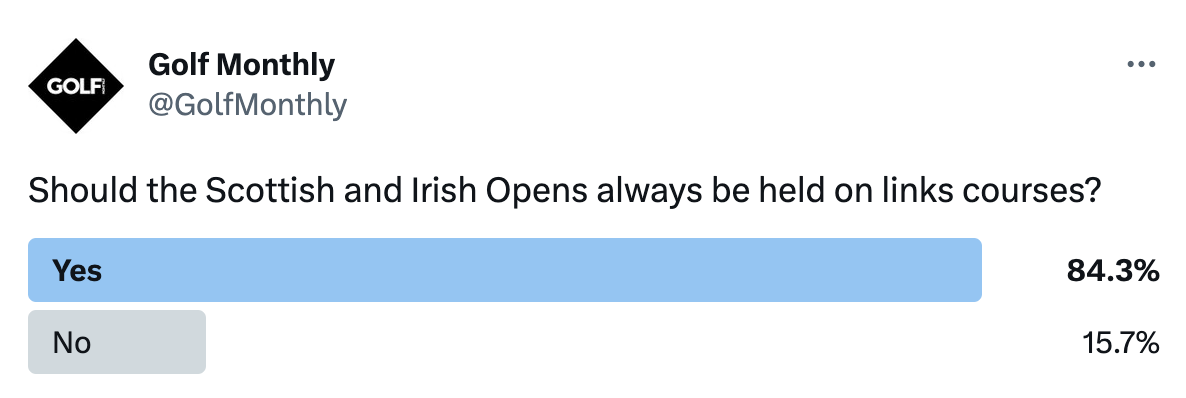
The Irish and Scottish Opens are two of the many excellent and historic national opens that feature on the DP World Tour schedule, but the courses they're played on are always a talking point.
Both countries have some of the world's finest and most famous links courses, but they're also home to some world class inland layouts, too.
So, should they always be played over links? Or should they mix it up, as they currently do?
Two Golf Monthly writers have their say...
Should The Scottish And Irish Opens Always Be Held On Links Courses?
Scotland and Ireland are home to the best true links courses in the world. They are not home to the best inland courses in the world. Can I stop there?
No, there is more to be said. Scotland is where golf (as we know it) began. It was initially played by intrepid fellows using a crook or stick to propel a pebble towards a target or rudimentary hole.
They played this new game on the strip of sandy terrain joining the sea to the arable farmland at the coast. The links, the cradle of golf, should be celebrated and the Scottish and Irish Opens can do that.
The links remains the best land in the world on which to play the sport – undulating and firm, delivering clean lies and strong bounces. The rolling dunes provide the perfect setting for golf holes.

Early architects were able to lay out fabulous courses by simply using the ground in front of them. As the game evolved, so too did the courses and, around the Scottish and Irish coasts, the layouts were modified and perfected to create the world-famous links tracks that are so esteemed today.
Scotland and Ireland should do everything possible to showcase these precious gems. Both countries owe it to the rest of the golfing world to host their national opens on the links.
In addition, the links provides the ultimate golfing examination. It demands skill and adaptability to both ground and weather conditions. The links calls for the low runner, the ball that holds against the wind, the long-range putt. It tests all elements of the game, more so than any inland course.
The Champion Golfer of the Year is decided on the links at The Open Championship; the champion golfer of Scotland and Ireland should also be determined by their prowess on the links.
Links courses are very much my first love when it comes to golf, so it might seem a little strange for me to be taking the ‘no’ side here. But I’m actually very comfortable doing so because ‘always’ is simply too restrictive when you factor in what both countries have to offer golfers - and tourists in general - away from their coastlines.
The Scottish Open has been staged on a traditional or modern links every year since departing Loch Lomond in 2010, prior to which it had visited links courses perhaps surprisingly rarely.

But it was still a hugely well-received event when it was played at either Loch Lomond or Gleneagles for much of the previous 25 years, as it not only made a habit of delivering some memorable moments and winners, but also showcasing beautifully one of Scotland’s undoubted USPs – its majestic scenery and breathtaking landscapes.
Similarly, Ireland may boast some of the finest links courses in the world, but relatively few of the new courses that emerged there during the Celtic Tiger boom years were on the coast, with excellent newcomers such as The K Club, Druids Glen and Mount Juliet again helping to highlight just how beautiful this country is away from its shoreline, too.
The Irish Open has gone in cycles, staying largely on the coast in the 1970s and 1980s, almost entirely inland in the 1990s and then mixing things up much more this century. I like that. Let’s not get too one-dimensional about it all.
Yes, the British Isles may be famed the world over for its superb links, but they actually make up a very small percentage of our total number of golf courses.
Surely it’s better for the golfing world to see the breadth of what we have to offer, rather than allowing our golf championships to get too typecast?
What our twitter audience said:








